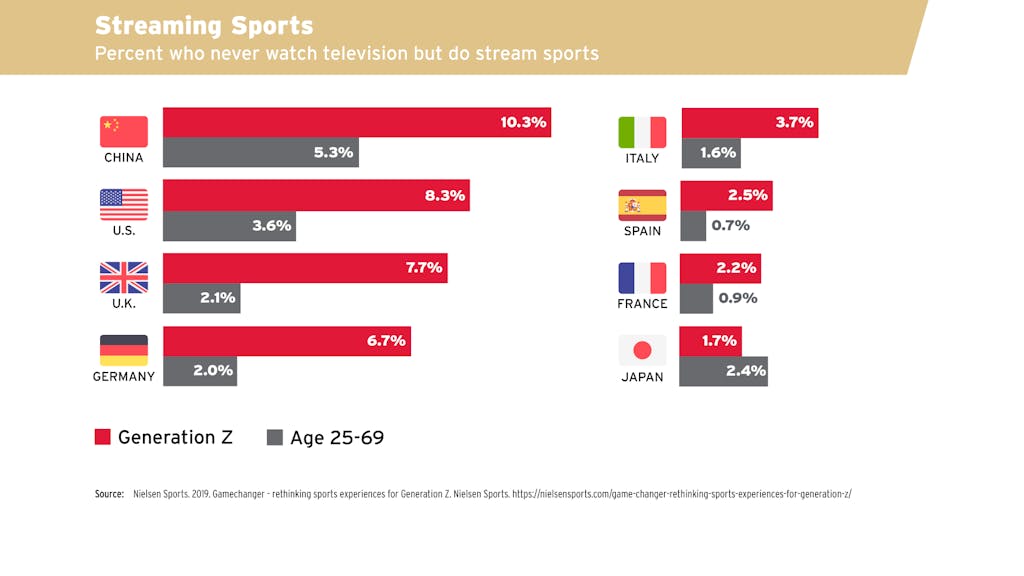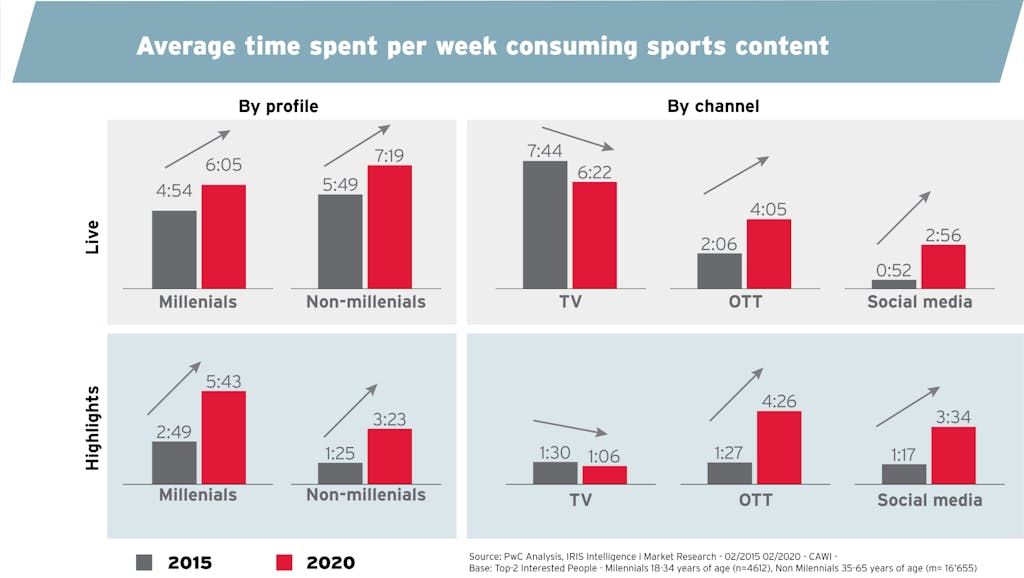The speed and nature of how fans adopt new forms of digital engagement is a challenge every sports property is either currently facing or – more worryingly – blindly ignorant of. It is a famously fast-moving sector of our industry, where one week you could be discussing in-game analytics in top leagues, and the next you could be talking about NFTs.
The focus is on creating a strategy that is agile enough to adjust to how potential new fans are consuming content. That is not exclusively about Millennials or Generation Z though; the differing ways all generations consume content is a potential headache for many rights-holders.
The world of entertainment has evolved to a stage where different people living under the same roof are consuming hundreds of pieces of content daily, spending an average of over seven hours watching media. Sport is the only subject matter within that broad scope of entertainment where people are often watching the same content source, just packaged differently.
Short hits of engagement
Digital marketing agency Two Circles estimates that sports media rights revenue fell to $32.1bn (€26.4bn) in 2020, against a pre-pandemic estimate of $50.5bn and down from $48.2bn in 2019.

While broadcasters’ bidding capacities have been impacted, traditional linear broadcast coverage isn’t going to disappear anytime soon. If anything, more innovative ways to deliver events are required than ever to ensure broadcasts remain fresh. That includes the inclusion of augmented reality graphics as well as a potential increase in virtual reality content (although I believe this is still a way off being incorporated into regular broadcasting). And even though sport remains one of the only experiences fans need to experience live, broadcasters also have a responsibility to cater to the casual fan with shorter-form video.
The growth of highlights packages – both fan-produced and pushed by rights-holders – indicates that it isn’t full-length sports events, but the peak moments that now attract fans, especially younger ones. They want to see the best moments from all sports, not just one match. Seeing one full broadcast does not give them a choice of entry points into trending conversations. They want short hits of highly engaging content which create more interactive experiences.
This idea is supported by the amount of people flocking to OTT channels to watch highlights. A study from Nielsen suggested that the average time Millennials spend watching this type of content has increased from 1.27 hours per week in 2015 to 4.26 hours in 2020. Yes, there has been an increase in the number of channels available to consumers, but the consumption of highlights content has also increased on social media (1.17 to 3.34 hours per week in 2020), while there has been a decrease in the amount of highlights content consumed on linear television (1.30 to 1.06 hours in 2020).

Boomers v Millenials v Gen Z – leveraging all three
The explosion of interest in non-live content offers a wide playing field for revenue from highlights, behind-the-scenes, near-live and archive content as well as access to data about fans and consumer habits. The latter can also be monetised or leveraged to improve content and drive engagement, specifically among Gen Z. Younger generations are keen to feel as though they are a part of the experience and create moments and even memes around events. They are more open to seeing traditional ideas challenged.
Older generations, on the other hand, continue to flock to traditional linear broadcasts as before. Many still want the pre-match punditry and event “structure” we all grew up with. That doesn’t mean technology and innovation doesn’t have its place and resting on your laurels is not wise. The benchmark continues to be pushed across all events and the expectation from viewers is to see new elements – such as augmented reality team line-ups.
Changing traditional models can be so disruptive in sport, so finding the right balance is key and there needs to be evidence that the change or innovation you are bringing works in the long run for all fans, regardless of their age. If you have the right arguments in place and have the right balance between adopting new ideas and ensuring all fans’ needs are met, then you have hit the sweet spot. It is a fine line though.
With that in mind, events need to ensure they have access to the technology that can quickly create content matched with the right channels to reach their audience. Tick those boxes and rights-holders have a chance at engaging with a multi-generational audience base. It’s a full house.
Dr. Christian Mueller is the chief executive of Infront X. Infront recently published a white paper on the six sports marketing trends for 2021. To download and read the full report click here.